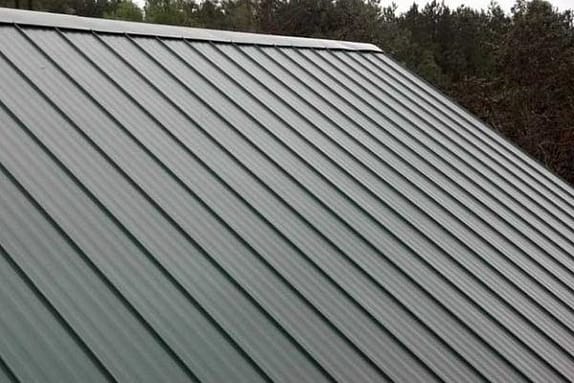 Metal roofing systems are ideal for steep-slope roof decking as they provide corrosion resistance and an element of luxury to your commercial property. Metal roofs are very durable and can stand a lot of wear and tear throughout their lifespan. While most commercial metal roofing systems are made up of large rolls of sheet metal, there are a lot of options in metal shingles and factory-made steel panels. Further options include color, corrosion resistant finishes, and designer roof fasteners and gutter systems.
Metal roofing systems are ideal for steep-slope roof decking as they provide corrosion resistance and an element of luxury to your commercial property. Metal roofs are very durable and can stand a lot of wear and tear throughout their lifespan. While most commercial metal roofing systems are made up of large rolls of sheet metal, there are a lot of options in metal shingles and factory-made steel panels. Further options include color, corrosion resistant finishes, and designer roof fasteners and gutter systems.
Metal roofs are not recommended for geographic locations that experience severe hail storms. Concrete tile roofing systems are a better match for those areas as they tend to last longer and do not bend or dent under the pressure.
Benefits of a Metal Roofing System
- Extremely low maintenance
- Several options in style and color
- Highly durable with a long lifespan
- Eco-friendly metal roofs are becoming more affordable
- Ability to be installed over existing roof coverings (in some cases)
The 2 Types of Metal Roofs
Vertical metal roofing has evolved from the terne and copper days to the corrugated aluminum or galvanized steel panels most frequently used today. Usually painted, vertical metal roofs are attractive, durable, and moderately priced.
Horizontal metal roofs have been associated in the past with tin-covered storage sheds or copper-domed cathedrals. Today’s panels of corrugated aluminum or galvanized steel are practical and attractive options.
Metal Roof Installation
Contrary to popular myth, metal roofs are not any more noisy than other types of roofs. A metal roofing system operates in much the same fashion as other roofing products. It uses a series of overlapping materials that dispel water. Unlike roofing materials in which each row overlays the previous row, metal roofs have an interlocking system so each panel overlaps and locks in place with adjacent panels or trim. This system keeps the roof watertight and helps hold the materials in place. Here’s a basic overview of what a roofing company looks at when helping you determine which type of metal roof is the best fit for your commercial building…
Anatomy of Horizontal Metal Roofing Installation
Ice guard – placed under and then over the starter flashing. The first row of shingles interlocks with the starter flashing.
Valley flashing – fits over the valley and the front edge overlaps the starter flashing. Shingles are cut to fit along the valley.
Strips of ice guard – set over the ridge, covering the tops of the last rows of shingles. Ridge caps are installed over the ice guard.
Anatomy of Vertical Metal Roofing Installation
Cleat – fastened to the fascia, then the eaves flashing is installed over the cleat. An offset cleat is placed over the eaves flashing to interlock with the lip of the panel.
Valley flashing – set over the valley, overlapping the eaves flashing. Offset cleats are installed along the valley flashing. Panels are cut to fit along the valley, and interlock with the offset cleats.
Z-closures – cut to fit between the ribs of the panels. Once they’re installed, the ridge cover is placed over the z-closures and both sides of the roof.
Our Professional Metal Roofing System Contractors
Many professional roofing companies will do a good job informing you of the benefits and features of a metal roof for your commercial or industrial building. There are a few companies out there, however, that will try to up-sell you on something you don’t necessarily need. At Roofing Advisors, we pride ourselves on the integrity and professionalism of the roofing company we determine to be labelled as the “best” in Kansas City. We guarantee that they will indeed inform you of your options, let you know the advantages and disadvantages of each, and allow you to make an educated decision without trying to “overcome objections” or spin-sell you on going with something more expensive. Give us a call for a free estimate on a metal roofing system in Kansas City.
